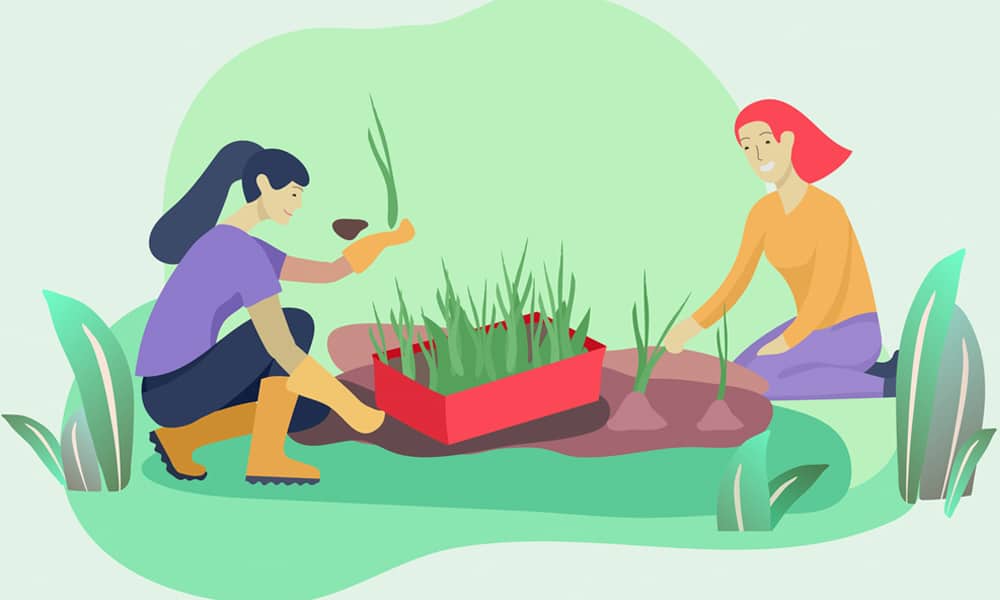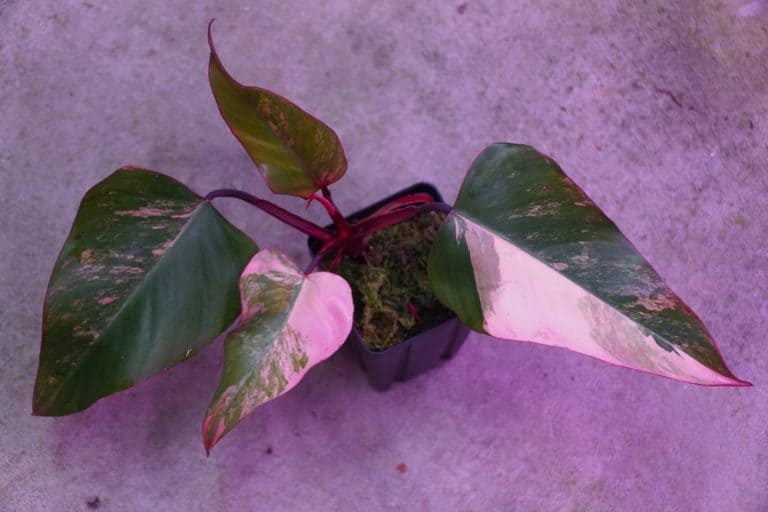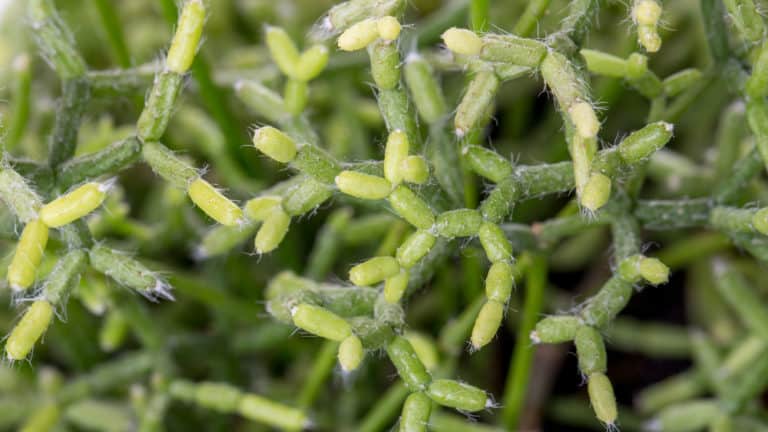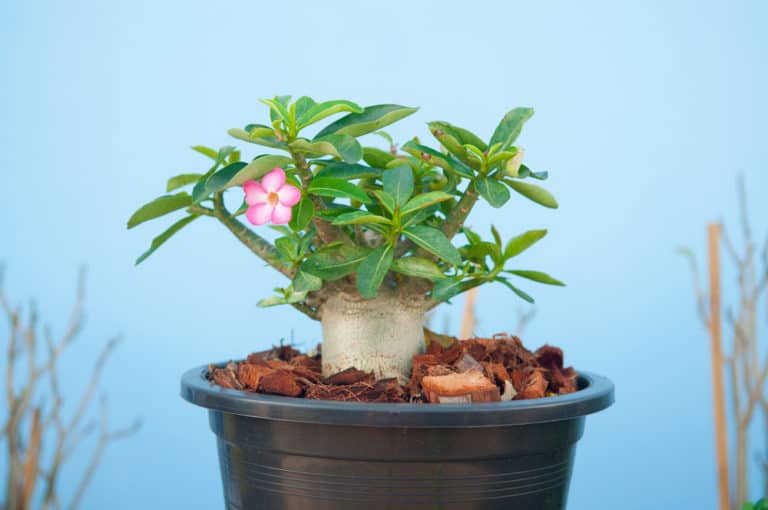Gardening Statistics in 2024 (incl. Covid & Millennials)

Home gardening is booming worldwide, but the trend was positive long before the pandemic.
Gardening is a soothing hobby for the whole family, a great way to get exercise, and improves self-sufficiency which is critical during this difficult period.
Here’s what the latest research tells us about gardening statistics and facts.
Gardening Statistics and Facts
Highlights of statistics on gardening:
- The Covid pandemic created 18.3 million new gardeners, most of whom are millennials.
- 42% of gardeners spent more time gardening during the Covid pandemic.
- Global online sales of gardening goods doubled during the Covid pandemic.
- 55% of American households engage in gardening activities.
- Millennials make up 29% of gardener demographics.
- Millennials have an increasing interest in cannabis cultivation.
- American adults spend $48 billion on lawn and gardening equipment each year.
- Average garden yields $600 of produce in a year.
- 35% of U.S. households grow vegetables, fruits, and other food.
- Children involved in growing vegetables are more willing to eat them.
1. The Covid pandemic created 18.3 million new gardeners, most of whom are millennials.
Interest in gardening remains strong as gardening trends are driven by the Covid pandemic.
In 2021, National Gardening Association conducted a study on gardening statistics in the United States and found that gardening participation was way up from pre-pandemic years. (1)
| New Gardeners | Millennials | Generation Z |
| 18.3 Million | 65% Increase | 44% Increase |
The trend is driven by fundamental changes in consumer behavior who had more free time, money, and space during the pandemic.
2021 has been a great year for the gardening industry as the research documented 18.3 million new gardeners in the United States.
Results found that gardening activities raised significantly at every garden experience level.
- Two out of three gardeners tried a new gardening activity during the pandemic.
- One in three gardeners had difficulty finding gardening goods they needed for their outdoor hobby.
Garden Center magazine study analyzed independent garden centers and found that from 2020 to 2021, there was strong growth among younger customer demographics.
U.S. and Canadian garden centers saw a whopping 65% increase in millennial customer demographics and a 44% increase in generation Z demographics. (2)
2. 42% of gardeners spent more time gardening during the Covid pandemic.
Pre-pandemic, Americans spent 87% of their time indoors, 6% in automobiles, and only 7% outdoors. (3) During the pandemic, most gardeners found indoor lifestyles intolerable and engaged more in the outdoors.
The 2021 National Gardening Association study found that 42% of gardeners increased their gardening activities due to the Covid pandemic, while only 9% gardened less. (1)
| Gardening During Covid | #1 Reason for Increase | #2 Reason for Increase |
| 42% Increase | 49% Mental health | 35% Family time |
The home gardening trend statistics show that the increased gardening was mostly due to increased free time available for gardening. Not having to drive to work means less time spent in a vehicle and more time spent outdoors.
30% of gardeners intend to increase their gardening activities post-pandemic and 59% intend to keep the level of activity the same.
The intention to garden more is especially prominent among millennials, families with children, and apartment owners.
49% of participants engaged in gardening because it’s good for mental health and 35% found that it’s a good activity for the whole family to engage in.
The same results were confirmed by Axiom 2021 U.S. Gardening Insights study, which also found that gardeners spent 42% more time in the garden in 2020 compared to prior years. (4)
Gardening statistics in the U.S. also show that the demand for seeds surged by leaps and bounds. The demand was so high that the 144-year-old Burpee Seeds company temporarily stopped taking orders for the first time in its history. (5)
3. Global online sales of gardening goods doubled during the Covid pandemic.
It’s no secret that Covid has sparked interest in old passions like houseplants and gardening. Thanks to this, gardening is booming again. Online and retail sales have flourished.
Digital platform Klaviyo analyzed its global e-commerce statistics on gardening to understand how Covid has impacted various industries.
| Online Garden Sales | Garden Retail Sales | Clothing Retail Sales | Furniture & Home Furnishing |
| +100% Increase | +9% Increase | -68% Decrease | -36% Decrease |
The research found that home and garden global online sales increased by 100% from 2019 to 2020. (6)
The 200-year-old flower retailer Berck’s analyzed Census monthly sales revenue of 35 different retail sectors from 2019 to 2020 and found that the gardening industry saw a healthy spike in revenue, despite the pandemic. (7)
The analysis found that the sales revenue for the building material and garden retail sector increased by 9%. At the same time, the sales of clothing and accessories dropped 68% and furniture and home furnishing dropped 36%.
Gardening retail has seen a positive trend from a 4.62% increase in revenue in 2019 to an 8.79% increase in revenue in 2020.
This trend of growth suggests a continuation of a strong interest in gardening in the future.
4. 55% of American households engage in gardening activities.
2020 gardening research by Scotts Miracle-Gro and Wakefield Research found that over half of the country (55% of American households) engage in gardening activities and another 20% are planning to do so in the near future. (8)
| Gardening Activities | Planning Gardening | Growing Edible Plants |
| 55% Households | 20% Households | 67% Grow or Plan |
The study also found that 67% of adults are growing or planning to grow edible plants, including vegetables (52%), herbs (33%), and fruits (31%).
This has led to a boom in sales in garden centers and promoting the benefits of growing your own food.
Home gardening statistics also show that the top sources for gardening-related information were garden websites (44%), their family (40%), and experts at local garden centers or hardware stores (37%).
Surprisingly only 1 in 5 gardeners used mobile apps as a source of information.
5. Millennials make up 29% of gardener demographics.
Interest in gardening is still growing and the millennial generation grows at a higher rate than any other age group, taking over the baby boomers gardener demographics. (1)
The National Gardening Association National Garden Statistics study found that the proportion of older demographics is steady at 35%, but the younger gardening demographic is rising rapidly to all-time highs. (9)
Millennials gardening started with succulents and houseplants here and there and has engaged in a full range of gardening activities.
Millennials (18 to 34-year-olds) make up 29% of gardening demographics in the U.S.
According to National Gardening Association, Millennials accounted for 25% of gardening spending in 2018.
| Generation Z Gardening Spend | Millennials Gardening Spend | Generation X Gardening Spend | Baby Boomers Gardening Spend |
| 44% Increase | 65% Increase | 33% Increase | 17% Increase |
The Garden Center magazine 2021 gardening industry report found that independent garden centers saw a surge in younger customer demographics, especially millennials (65%) and Gen Z (44%). (2)
6. Millennials have an increasing interest in cannabis cultivation.
It’s no secret that marijuana use has been a controversial topic for ages, but during the last years, the tolerance for cannabis cultivations has grown significantly.
For example, in 2021, New York legalized cannabis use, and right now, there are more states where cannabis is legal than illegal. (10)
| Interested in Cultivating | Interested in Cultivating |
| 50% of Ages 18-44 | 12.5% of Ages 55+ |
One of the most interesting gardening trends statistics by the 2021 National Gardening Association study is that the interest in cannabis cultivation among millennials is rapidly increasing. (1)
About 50% of study participants aged 18-44 stated that they would cultivate cannabis if it were legal to do so. At the same time, only 12.5% above the age of 55 said they would cultivate cannabis.
The study also sees a possibility for cannabis ending up being the gateway plant into vegetable gardening.
As cannabis cultivation requires knowledge on fertilization, harvesting, and care of plants, new gardening people might also think, well, maybe I could grow tomatoes as well.
7. American adults spend $47.8 billion on lawn and gardening equipment each year.
Home and garden industry statistics show that gardening was on a positive trend even before the pandemic.
Much of it has been thanks to millennials, to whom plant parenting has become a lifestyle according to houseplant statistics.
| Spent on Lawn & Gardening Equipment | Average Household Spent | Highest Spending Demographics |
| $47.8 Billion | $503 on Gardening | $608.54 Ages 35-44 |
According to the 2021 Garden Media Garden Trends Report, American gardeners spent a record $47.8 billion in lawn & garden retail sales. (11)
Average household spent a record of $503 (up almost $100 over the previous year) on gardening goods. This included everything from bulbs to furniture.
The study also found that the 35-44 year demographic had the highest mean spending of $608.54. This was highest among all the age groups in 2019.
8. Average garden yields $600 of produce in a year.
If you, too, started growing your food during the pandemic, you aren’t alone.
The popularity of home gardening has skyrocketed as the pandemic threatened our food security and made us rethink the statistics of how much money you save gardening.
| Average Garden Yield | Average Garden Cost | Average Garden Return |
| $600 per year | $70 per year | $530 per year |
Mother Nature Network and National Gardening Association studied where and how Americans are gardening and what they are growing. (12)
The report found that the average size of an American vegetable garden is 600 sq. ft which is surprising as the median size of an average garden is 96 sq. ft.
The average garden yields $600 of produce in a year, which is roughly $1 per sq. ft.
When subtracting the $70 spent per household, the average household returns about $530 each year from its garden.
This report suggests that planting a garden to save money statistics does make sense.
9. 35% of U.S. households grow vegetables, fruits, and other food.
Food gardening has been at the highest levels of engagement in more than a decade.
According to National Gardening Association Special Report, 1 in 3 Households (35%) in the U.S. grow their own food. (13)
| Growing Vegetables | Growing Herbs | Growing Fruit Trees | Growing Berries |
| 26% Spend Increase | 42% Spend Increase | 46% Spend Increase | 323% Spend Increase |
The food gardening statistics study found that the number of households engaging in food gardening has grown from 36 million households to 42 million households in just 5 years.
The highest increase was among millennials and households with children.
Interestingly enough, the backyard garden statistics show that half of all of the food gardening spending was on vegetable gardening.
The vegetable gardening trend is on the rise and tomato is the most popular vegetable in the U.S., as 86% of gardeners grow them.
Top 10 homegrown vegetables:
- 86% Tomatoes
- 47% Cucumbers
- 46% Sweet Peppers
- 39% Beans
- 34% Carrots
- 32% Summer Squash
- 32% Onions
- 31% Hot Peppers
- 28% Lettuce
- 24% Peas
10. Children involved in growing vegetables are more willing to eat them.
How to get children to eat vegetables without the stress? Well, include them in the gardening process.
Research shows that children who are involved in growing vegetables are more willing to eat them. (14)
In 2009 researchers conducted a study to learn the effects of school gardening on children’s vegetable consumption.
The results showed that school gardening had a positive effect on children’s vegetable consumption, attitudes toward, and willingness to taste vegetables.
The study also found that gardening also increases the variety of vegetables eaten.
The same approach works with adults as well. According to community garden statistics, community gardeners eat 37.5% more fruits and vegetables than non-gardeners.
There have been several other studies suggesting that children’s participation in gardening has positive effects in vegetable and fruit consumption and increased knowledge about nutrition, plant ecology, and gardening. (15)
References
- National Gardening Association. 2021. National Gardening Survey 2021 Edition. Link
- Garden Center Magazine. 2021. State Of The Industry Report. Link
- Neil E. Klepeis, William C. Nelson, Wayne R. Ott, John P. Robinson, Andy M. Tsang, Paul Switzer, Joseph V. Behar, Stephen C. Hern, William H. Engelmann. 2001. The National Human Activity Pattern Survey (Nhaps): A Resource For Assessing Exposure To Environmental Pollutants. Link
- Axiom Marketing. 2021. Axiom 2021 Gardening Insights Survey: Gardening In A Covid-19 World. Link
- Aimee Picchi, Cbs News. 2020. Seed Companies Can’t Keep Up As More Americans Turn To Growing Their Own Food. Link
- Klaviyo Software. 2020. Covid-19 Ecommerce Market Pulse. Link
- Breck’s. 2020. The Rise In Gardening Retail During Covid-19. Link
- Miracle-Gro. 2021. Americans Are Growing More Than Ever. Link
- Globe Newswire. 2018. National Gardening Association National Gardening Survey. Link
- Disa Global Solutions. 2021. Map Of Marijuana Legality By State. Link
- Garden Media. 2021. Garden Media’s 2021 Garden Trends Report: The Great Reset. Link
- Boston Globe Media. 2015. Composting Is A Great Way To Make Your Own Soil. Link
- National Gardening Association. 2014. Garden To Table: Special Report. Link
- Michelle M. Ratcliffe, Phd, Kathleen A. Merrigan, Phd, Beatrice L. Rogers, Phd, Jeanne P. Goldberg, Rd, Phd. 2009. The Effects Of School Garden Experiences On Middle School-Aged Students’ Knowledge, Attitudes, And Behaviors Associated With Vegetable Consumption. Link
- Cornell University, College Of Agriculture & Life Sciences. 2021. Learn, Garden & Reflect With Cornell Garden-Based Learning. Link
FAQ
What percentage of Americans do gardening?
55% of American households engage in gardening activities.
How profitable is gardening?
Average garden yields $600 of produce in a year.
How much do people spend on gardening a year?
Average household spends $503 per year on gardening goods.
How large is the gardening market?
Lawn and garden is a $48 billion per year industry in the U.S.
Which age group does the most gardening?
35-44 age group does the most gardening in the U.S.
How old is the average gardener?
Average gardener in the U.S. is 35-44 years old.
How many new gardeners are there?
Covid pandemic created 18.3 million new gardeners in 2021, most of whom are millennials.
How many millennials are gardening?
Millennials make up 29% of gardener demographics in the U.S.
What do gardeners do in the winter?
Gardeners clean up all the tools, workspaces, and greenhouses during the winter. Additionally, they engage more in indoor gardening during the colder months.
Is gardening an expensive hobby?
Gardening is probably one of the most budget-friendly hobbies out there. Seeds are cheap. The only thing gardening requires is your time.
Is it cheaper to buy vegetables or to grow them?
Growing vegetables are cheaper in the long turn compared to buying them from the grocer store.






